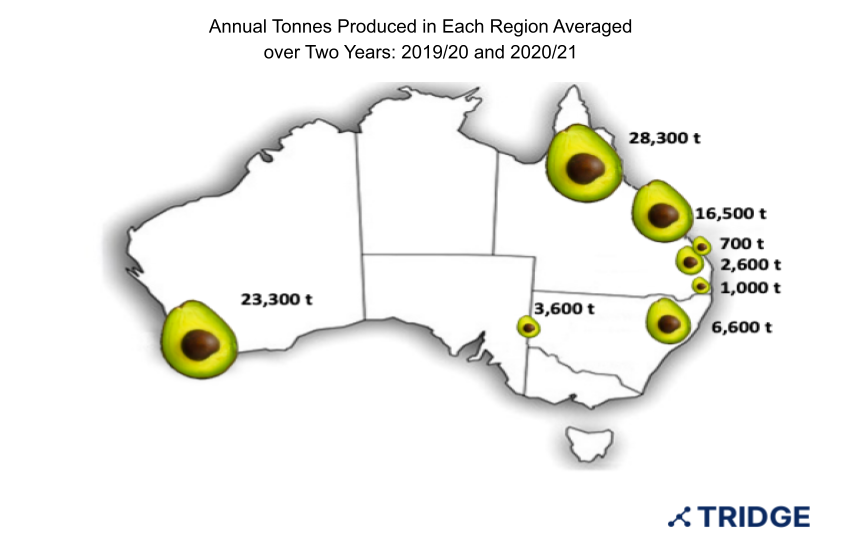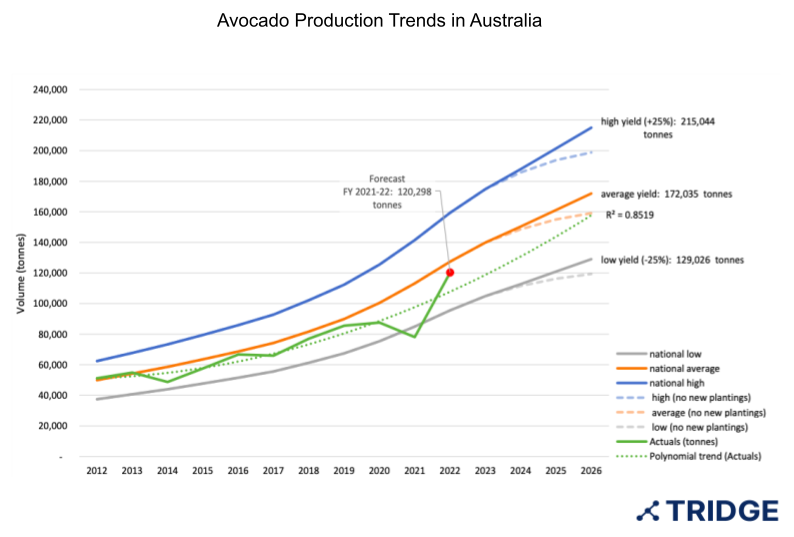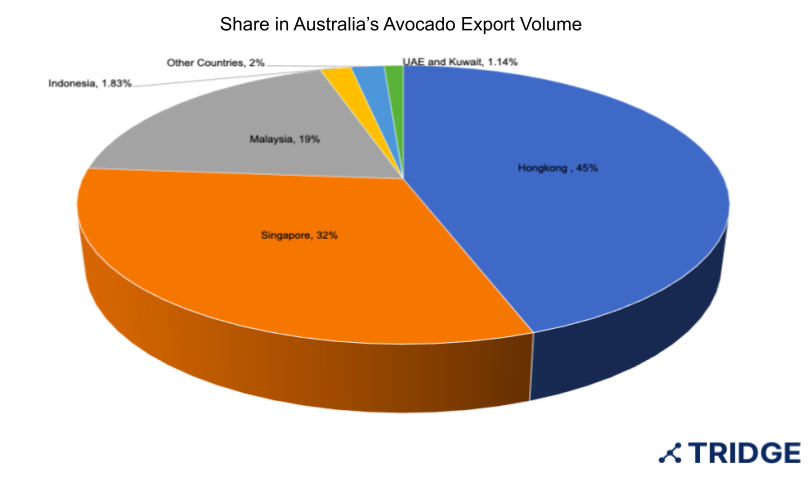Holy Guacamole - Australia expects to get a Bumper Avocado Harvest
Avocados are harvested in Australia all year round due to a wide range of agro-climatic conditions across eight major avocado-growing regions. Hass avocado is the most popular variety and represents 70% of production during 2020/21. Following Hass, Shepard avocados are also very popular and are harvested in Queensland throughout late Summer-Autumn, making up 25% of total production. Other avocados include local varieties like Maluma, Reed, Lamb, Gem, Carmen, Wurtz, and Fuerte. In the past decade, Australia’s demand for avocados has boomed which has motivated the Australian farmers to respond by increasing the number of plantings. The national harvest is on track to reach 120,000 tonnes in 2021/22, showing a 200% increase in the last 12 years.

Source: Avocados Australia.
In the year 2020-21 Australia produced over 78.08 thousand tonnes of avocados which were 11% less than the previous year. For the upcoming year 2021-22, Australian avocado production is forecasted to increase to 120.29 thousand tonnes. The updated long-term forecast suggests Australia’s avocado production continues to increase to about 170,000 tonnes by 2026, more than double the 2020-21 crop. As a consequence of increased production, it is predicted that the demand for avocados will rise from four kilograms per person to five kilograms per person by the end of 2021/22.

Source: Infocado, Avocados Australia analysis.
The only drawback of the massive overflow of avocados is a dramatic fall in avocado prices across Australian supermarkets. The prices hit rock bottom at USD 1 per piece for a brief period. The massive avocado oversupply in the coming years will eventually result in a struggle for farmers to offload their fruit for a decent price. Many farmers are expected to dump their crops or risk their produce withering on the tree until demand improves.
Even though Australia has exponentially growing avocado production, Australia remains a small player in the world avocado market. The country exports only 4% of the total production of 78 thousand tonnes. As producers and traders expect the production to increase even more quickly in the coming years, they should tap this opportunity by building an export network across the world. This would help in controlling the oversupply in domestic markets and improve the profit margins for the farmers by opening more options for them. Australia is currently exporting avocados to Hongkong, Singapore, Malaysia, and Indonesia and has the potential to tap the growing avocado market in large Asian countries like China and India.

Source: IHS Global Trade Atlas (2021)




